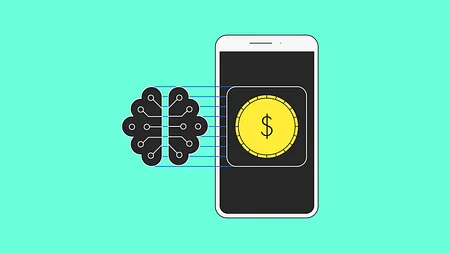Where's the retail banking revolution?

Delivered straight to your inbox
Get each edition of Unfiltered - our no-BS, uncensored analysis of fintech news and hot topics sent to your inbox each fortnight.
Find out more
We were promised that fintech disruptors were going to revolutionise banking and sweep away the legacy players forever. So, what happened?
In late 2015, I was asked to lead an assessment of the impact challenger banks were having on the retail banking environment. It was the age of disruption – Uber, Netflix, Spotify, AirBnB and Amazon were all changing the way we consumed goods and services. Apple Pay had launched in the spring of 2014 and people were expecting that it would drive a huge shift towards mobile payments.
Surely banking was ripe for a similar level of disruption?
Dot com boom v2?
Fledgling disruptors began to emerge - Monzo (then still called “Mondo”), Starling, and Revolut took every opportunity for their founders to raise their profile (and funding) by announcing to anyone that would listen that they were going to fundamentally change the face of retail banking.
Despite the noise, industry leaders were sceptical and quick to point to the dot com boom and bust era which saw many internet banks rise and quickly fall. Big banks were ready to respond to the competitive threat as they had before - by launching their own solutions, acquiring existing players, or simply incorporating the best features where possible.
So 8 years on, who was right and who was wrong?
It would be hard to argue that any of these players have really revolutionised retail banking
Financial uncertainty rocks the challenger boat
After the recession of 2008, the anti-bank sentiment of the challengers resounded with much of their rivals’ target audience. As such, nobody can question that digital banks have had a huge impact on the level of customer expectation for digital banking by simplifying application processes and access, improving the quality and presentation of data, and developing more personalised propositions. They were also instrumental in providing greater financial inclusion and easier access for many to banking-like services.
However, as we return to a time of financial uncertainty, consumers are increasingly aware of some of the protections large banks offer in protecting savings and deposits which will undoubtedly impact some of the growth plans for leading fintech players. A significant increase in inflation and interest rates compounded the challenges as digital banks lack the large back book or balance sheets of their major bank competitors.
Sadly, it would be hard to argue that any of these players have really revolutionised retail banking to the degree that many hoped or expected back in 2008. Even one of the leading players now declares that they’re in the super-app not the banking business.
What went wrong?
Homogenisation of fintechs with traditional banks
Many fintechs launched with niche, tailored propositions that greatly improved the customer experience but lacked the widespread market share or usage necessary to build a successful business. In an effort to increase the addressable market challenge, they developed similar features and functionality to their competitors - resulting in a less differentiated, more homogeneous customer proposition. Ironically, they also began to add products such as credit cards or loans that made them seem increasingly similar to the legacy players they were trying to displace.
In turn, the larger banks raised their game from a digital functionality standpoint - not to be better than these digital players but simply to be “good enough” to reinforce customers' inertia and reluctance to change banking provider. Customers still remain unlikely to switch banks - in 2022 about 2% of UK adults switched their primary current account. Despite the huge increase in available alternatives, this figure is actually smaller in absolute and percentage terms than when seven-day switching was introduced a decade ago. It appears that for many consumers, the leading digital players are incremental rather than alternative banking service providers.
What regulation gave with one hand, it would take with the other.
Is regulation the driver or Achilles’ heel of innovation?
Regulation was seen as a key driving force and enabler for challenger banks and many thought Open Banking would unlock the possibility for new entrants to develop compelling customer propositions and break the banking “walled garden.” Ironically, what regulation gave with one hand, it would take with the other - capped interchange would limit revenue opportunities from the digital payment transactions and many scaling fintechs would struggle to satisfy the compliance demands of local regulators.
Likewise, as we return to a time of financial uncertainty, consumers are increasingly aware of some of the protections large banks offer in protecting savings and deposits and this will undoubtedly impact some of the growth plans of the leading fintech players. A significant increase in inflation and interest rates has compounded the challenges, as digital banks lack the large back book or balance sheets of their major bank competitors.
My unfiltered opinion
While consumer retail banking transformation may have stalled somewhat, other areas see continued exponential growth. Small businesses, which were historically underserved and undervalued by large players today, have a far wider range of financial services available and accessible as a result of fintech innovation.
B2B fintechs are also leveraging cloud technology to develop new workflows that radically change the financial services landscape for functions such as Accounts Payables and Receivables. The key difference between these sectors and retail banking is the lack of regulation, limited penetration or offering from large incumbents, and key customer demand for access to new financial services.
By contrast, looking at the retail banking landscape today, with homogenisation in feature-set between fintechs and big banks, I suspect instead we will begin to see the banks work more closely to provide underlying banking services as part of other propositions. We are already witnessing the evolution of embedded digital credit and lending products with the likes of ‘Credit-as-a-Service’ and BNPL.
Unfortunately, regulation, customer inertia, and a lack of truly game-changing long-term propositions make it highly unlikely that we'll see the digital banking revolution we were once promised transform our lives anytime soon.




